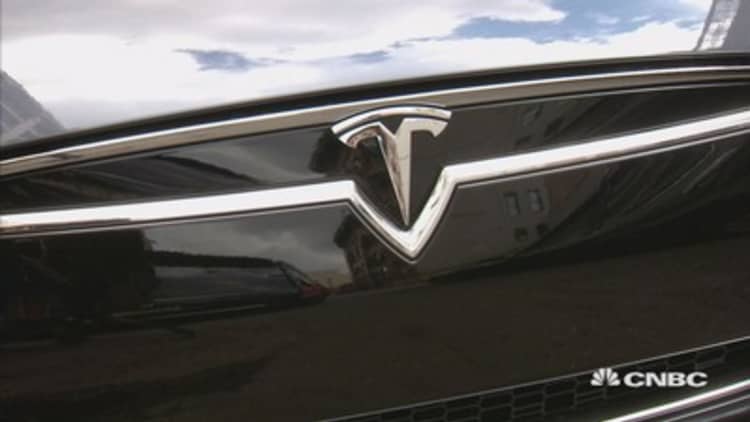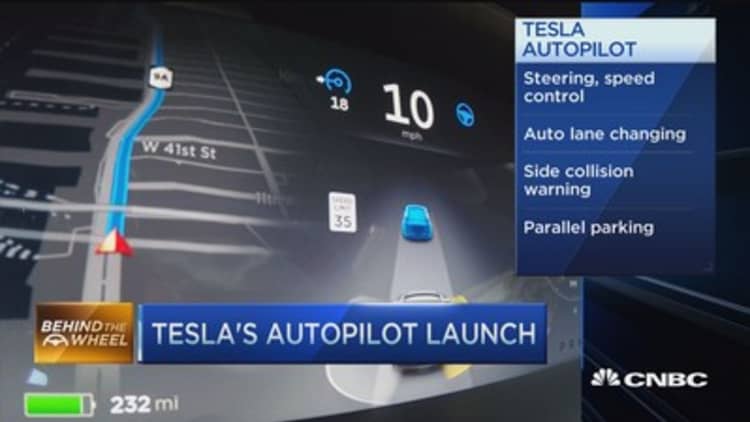


Tesla is giving those who own a Model S or Model X the ability to take their hands off the wheel and let their vehicle take control when driving in certain conditions.
The company is updating the software on thousands of these models through a new system called Tesla Autopilot. The technology, which will be rolled out Thursday, allows those vehicles to control steering, speed, braking and lane changing.
"I think this is going to be quite a profound experience for people when they do it," Tesla CEO Elon Musk said Wednesday. "We've been testing it for over a year, so we've [gotten] quite used to it. But I've noticed that when I put friends of mine in the car, and they see the car drive, they are blown away. So it's really quite an interesting, new experience,"
Here's how it works: The system incorporates information from 12 ultrasonic sensors that are monitoring traffic all around the vehicle.
In addition, a camera in the front windshield and long-distance radar in the front grille provide a constant "reading" of the road and what lies ahead.
All of that information is combined with the GPS data streaming into the vehicle, which allows the autopilot system to control whether the Tesla Model S or X can change lanes, and whether it should slow down or turn when the road is curving.
The automaker is careful to point out that the current version of Tesla Autopilot requires the driver to occasionally hold the steering wheel, as one way to keep the driver engaged. There are also visual prompts in the vehicle's instrument panel, and audio chimes to alert drivers when the system is active or they need to take control.
In announcing the rollout, Musk reinforced the need for early users to be cautious while using the technology.
"It's auto-pilot version one. We still think of it sort of as public beta. So we want people to be quite careful at first," he said.
Right now, only those Tesla models built since September 2014 have the required hardware that enables them to incorporate the autopilot software. Those buyers who paid $2,500 for the Tesla technology package will get the autopilot software automatically.
Tesla Autopilot currently has four functions.
- Autosteer, which keeps Tesla vehicles in their lanes and manages their speed;
- Auto lane change, which controls the vehicle changing lanes when it's safe to do so;
- Autopark, which allows Tesla owners to parallel park without having to touch the steering wheel; and
- Side-collision warning, which alerts drivers when the system detects other cars or obstacles that are too close to the side of their Model S or X.
Tesla is not the only automaker or technology company that has been developing partial autonomous-drive technology. Several automakers plan to introduce similar features in their vehicles over the next couple of years.
Meanwhile, many automakers already have technology in their vehicles that enables automated parking, or that alerts vehicles to the risk of side collisions when changing lanes.
Tesla Autopilot has been in development for more than a year. A spokesperson for the automaker said the company has been regularly updating the National Highway Traffic Safety Administration and other regulators about how Tesla Autopilot will work when used in everyday, real-world driving.
Questions? Comments? BehindTheWheel@cnbc.com.





